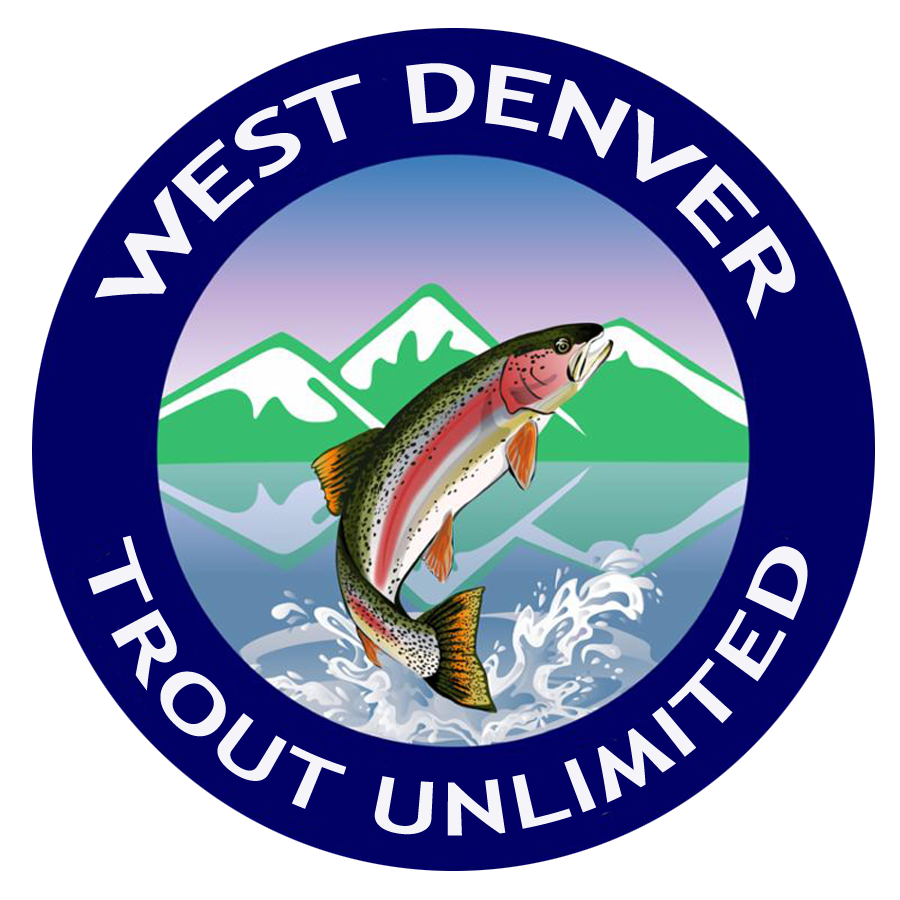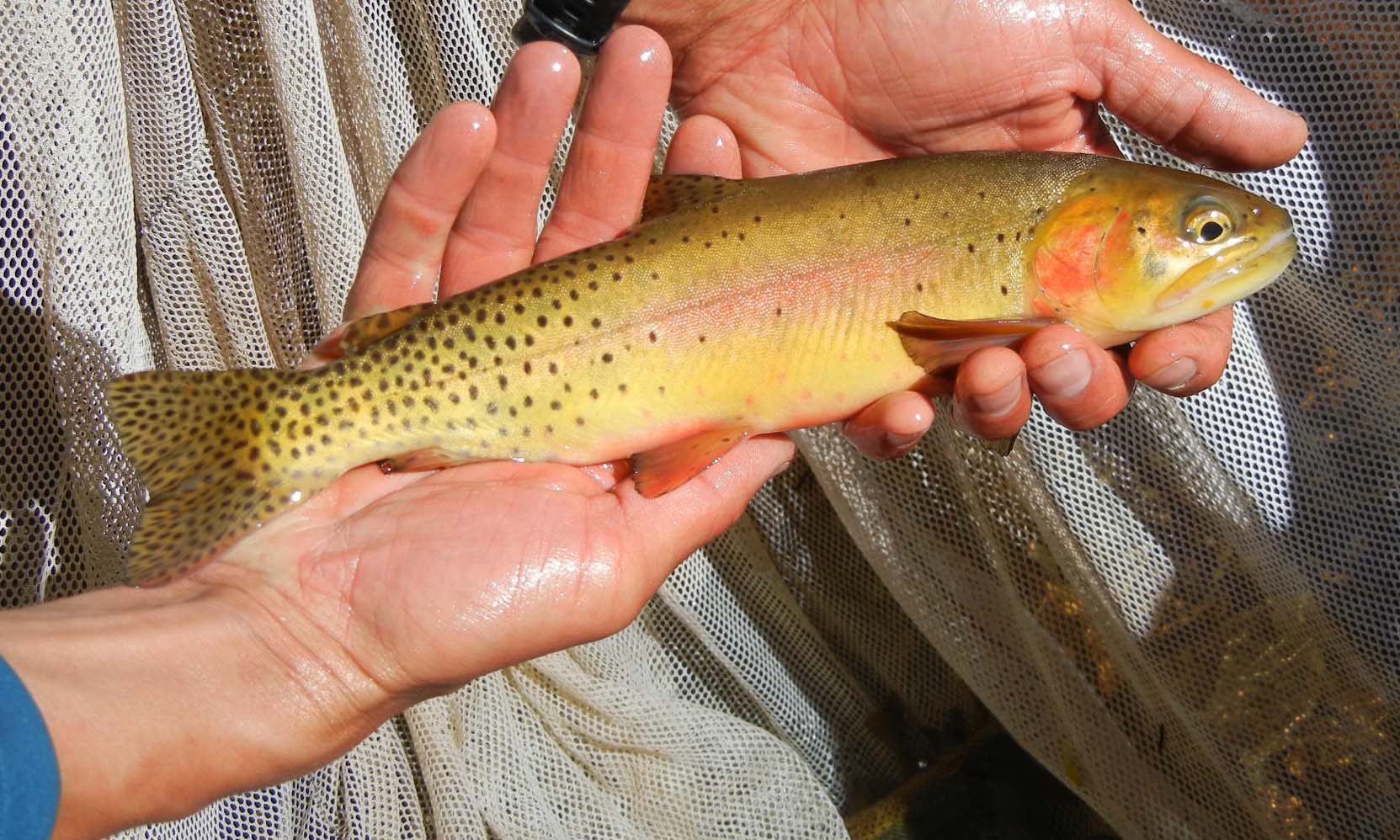
 Tim Toohey, WDTU President, and chapter member John Pern discussed plans for the day at the Herman Gulch trailhead. John took all the photos for this article.
Tim Toohey, WDTU President, and chapter member John Pern discussed plans for the day at the Herman Gulch trailhead. John took all the photos for this article.
 The trailhead elevation measured at 10,320 feet, and that’s where we started. Then there was a steep climb to get above the cataracts on Herman Gulch. Pairs of fishermen each carried a bucket for trout collection, as well as gear
The trailhead elevation measured at 10,320 feet, and that’s where we started. Then there was a steep climb to get above the cataracts on Herman Gulch. Pairs of fishermen each carried a bucket for trout collection, as well as gear
 Above the creek cataracts, the trail leveled out to a more manageable grade for walking.
Above the creek cataracts, the trail leveled out to a more manageable grade for walking.
 Boyd’s plan separated the creek into five reaches to fish. Each reach was about a half mile in length. Four to six fishermen worked each reach. Here Dennis Wiles is shown fishing in reach 5, the farthest reach from the trailhead.
Boyd’s plan separated the creek into five reaches to fish. Each reach was about a half mile in length. Four to six fishermen worked each reach. Here Dennis Wiles is shown fishing in reach 5, the farthest reach from the trailhead.
 Boyd stationed technicians within each of the five reaches to pick up fish and carry them in buckets to mesh pens for temporary holding.
Boyd stationed technicians within each of the five reaches to pick up fish and carry them in buckets to mesh pens for temporary holding.
 This is what was being caught…..cutthroats of mixed lineage.
This is what was being caught…..cutthroats of mixed lineage.
 Mesh pens such as this one were set up in the creek by CPW technicians.
Mesh pens such as this one were set up in the creek by CPW technicians.
 It surprised many of us that a little creek like Herman Gulch held trout of this size. We had joked at the chapter meeting that we would be taking a long walk to catch short fish.
It surprised many of us that a little creek like Herman Gulch held trout of this size. We had joked at the chapter meeting that we would be taking a long walk to catch short fish.
 Fishing was halted, as planned, at 1330 hours. Fish were loaded into buckets, or into plastic bags, and carried back down to the trailhead.
Fishing was halted, as planned, at 1330 hours. Fish were loaded into buckets, or into plastic bags, and carried back down to the trailhead.
 At the trailhead, fish were loaded into a truck-mounted aerated tank.
At the trailhead, fish were loaded into a truck-mounted aerated tank.
 Fish survival down the trail was very good. Once in the aerated tank, the fish looked relaxed and happy. The tank truck took the trout a short distance to release points on Clear Creek.
Fish survival down the trail was very good. Once in the aerated tank, the fish looked relaxed and happy. The tank truck took the trout a short distance to release points on Clear Creek.
 Relaxed and happy also described all of the volunteers who took part in the trail-head lunch prepared by Tim Toohey, Linda Miyamoto, and John Murphy.
Relaxed and happy also described all of the volunteers who took part in the trail-head lunch prepared by Tim Toohey, Linda Miyamoto, and John Murphy.

